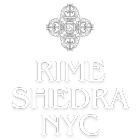About Rime Shedra NYC
The mission of the Rime Shedra is to make accessible the vast treasures of Buddhist wisdom to those who wish to progress further in their understanding of the profound principles presented in these advanced Buddhist texts. The understanding of the ultimate nature of reality is the key to liberation. For practitioners this program provides an opportunity to develop a more sophisticated understanding of the nature of reality. For scholars it provides an opportunity to expand their understanding of Buddhism by cultivating an experiential understanding. The program is based upon the traditional Shedra, or monastic college, curriculum which is the cornerstone of Buddhist education in all of the schools of Tibetan Buddhism.
We started in January 2004 in the hopes of riding the wave of momentum that DJKR started by teaching a four-year program on the Introduction to the Middle Way, Madhyamakavatara, Chandrakirti’s masterpiece on the nature of ultimate reality as emptiness and one of the five main texts of every Shedra curriculum in the Tibetan tradition. That was the first text we studied and we went thru it in great detail, spread over five courses altogether taking three years. We initially had 50 participants.
Over our now twenty years we have run about 65 courses, most consisting of 12-14 weekly classes for a total of about 850 classes. During this time, we have had over 100 different participants. Most courses have about 15 participants while there is a core of about 10 students that have attended almost every course for much of the past ten years! We also have hosted special visiting teachers including H.E Dzongsar Jamyang Khyentse Norbu Rinpoche, Kyabgon Phakchok Rinpoche and Khenpo Karl Brunnhoelzl.
Our website presents a general introduction to the five topics covered in the curriculum and hosts the recordings of our all of our classes since 2008 as well as all of the materials used – syllabi, sourcebooks, handouts and additional readings.
Our curriculum consists of the following five topics:
Abhidharma or elements of experience
Pramana or the delineations of the quality of our awarenesses.
Madhyamaka or the understanding of the absence of mental fabrication.
Bhavana or mental cultivation, in particular Shamatha and Vipashyana.
Marga or the path of personal development
The curriculum is presented in 10 to 12-week courses using either one key published text or a selection of representative texts compiled into a sourcebook to illustrate a variety of differing approaches or views on a topic. Classes are conducted using a combination of “word” and “meaning” commentary, which are the two most common traditional Tibetan methods for study of the dharma. This consists of a close reading of the texts, going through them sentence by sentence, extrapolating upon their terminology and explaining both their specific and general meaning.
Questions and other input from participants are encouraged though out the class instead of waiting for the end of a presentation. This approach strengthens the discussion and helps to build a richer overall exploration of the text and the topics.
For each course, we use either a published text, supplemented with handouts, or a sourcebook (usually also supplemented by more handouts). Syllabi, sourcebooks, handouts and recordings of all classes are made available on our website.
